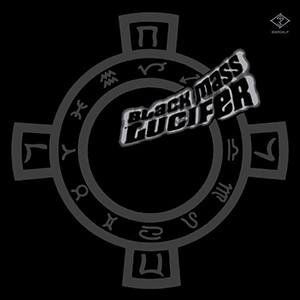 First issued in 1971 and out of print for over three and a half decades, Black Mass is the sole release from Canadian synth innovator Mort Garson under the Lucifer name. A fully electronic-based record, much of the album has a distinctly vintage sound to it, largely due to the electronic instrumentation that was still in its infancy. However, some moments shine through as truly innovative for the time, and with the resurgence of interest in modular synthesizers, it is the perfect time for it to be resurrected.
First issued in 1971 and out of print for over three and a half decades, Black Mass is the sole release from Canadian synth innovator Mort Garson under the Lucifer name. A fully electronic-based record, much of the album has a distinctly vintage sound to it, largely due to the electronic instrumentation that was still in its infancy. However, some moments shine through as truly innovative for the time, and with the resurgence of interest in modular synthesizers, it is the perfect time for it to be resurrected.
Make no mistake:Black Mass is certainly a record of its time.Not just in terms of the equipment used, but also the imagery.In 1971, the record is an early entry in the post-Black Sabbath evil landscape, and contemporaneous with early satanic bands such as Coven and Black Widow.This is also in cinema, being right in between Rosemary’s Baby and The Exorcist.With the real world immersed in the fear of the seemingly occult-tinged Tate-LaBianca murders, this era was when the seed was sown for the 1980s satanic panic.
Outside of this historical context, Garson’s work is less disturbing than it may have been upon its initial release.Synthesizers are no longer new and spooky, and the various forms of heavy metal have driven satanic imagery into the ground.So the twittering scales and white noise bursts as percussion of "Solomon's Ring" lack the creepy impact they may have had 45 years ago, but it still sounds good for what it is, especially in its creepy, lurching conclusion."Witch Trial" is another composition in which the instrumentation screams 1970s, but with a nice eerie passage placed in the middle.
The moments where Garson deviates from this formula are the stronger ones."The Ride of Aida (Voodoo)" is built upon a percussive electronic backing that, I assume, is supposed to be a synthetic approximation of tribal drumming.Which may not be entirely successful, but with its tape manipulated voices and percolating synthesizers, the result is still compelling and has a unique sound all its own.The synthetic bells and manipulated choral tapes of "Black Mass" give more of a genuine, rather than schlocky creepy feeling to it, even if it is still very obviously of the time it was released.
"The Evil Eye" also demonstrates Garson doing well in creating an atmosphere.Distinct, but sinister melodies and abstract electronic sound effects are effective, and the more rhythmic, percussive second half is excellent."Voices of the Dead" also avoids the more cliché synth sounds and instead mostly sticks to open, expansive passages and the result are something closer to a proto-dark ambient mood.
Make no mistake:Black Mass in 2016 has a kitschy, campy feeling to it that cannot be ignored.When listening to it in the context of when it was originally released, the intended darkness is a bit more effective, but of course its impossible to fully listen to it without thinking of modern sensibilities.But even today, with its dated sound and less-than-sinister imagery, the record is still a great one that, not only captures the old school horror movie vibe, but also some compelling early synthesizer excursions.
samples:
 
Read More

